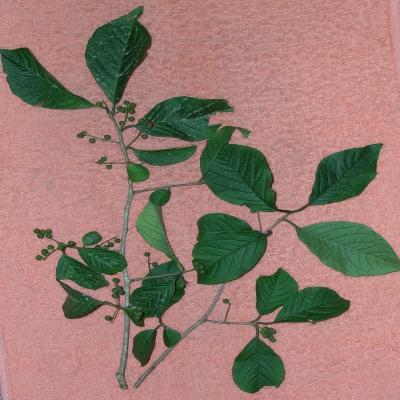Embelia ribes Burm.f.
Synonyms : Embelia grandulifera Wight
Family : Primulaceae
Group : Diuretic/renal protectant
Parts Used : Root , Fruit , Leaf , Seed , Root bark
Vernacular Names :-
| English | : | Embelia |
| Malayalam | : | Vizhal |
| Hindi | : | Vagvidang |
| Sanskrit | : | Vidangah |
| Tamil | : | Vayu-vilamga |
| Telungu | : | Vellal. |
Distribution and Habitat: Found throughout India
Botany: A large scandent shrub with long, slender, flexible branches and bark studded with lenticels.
- Leaves: Simple, alternate, elliptic-lanceolate, short and obtusely acuminate, entire, coriaceous glabrous on both sides, shiny above, silvery beneath gland dotted, glandular pits near the midrib beneath. The whole leaf is covered with minute red glands, which are quite conspicuous in young leaves.
- Flowers: White or greenish white in terminal and axillary, lax panicled racemes
- Fruit: Globular,5 cm in diameter, dull red to nearly black berries, longitudinally striated with short slender persistent pedicel and style base; seed single globose, hollow at the base, white spotted, testa membranous, albumen pitted.
Properties: astringent, carminative, purgative, anthelmintic, stimulant, alterative, diuretic and purgatives
Chemical composition:Active compound is quinone .Fruits contain 2 to 3 per cent Embellin. Berries contain vilangin.
Uses: It is used to cure pyorrhea. Root improves digestion and cures flatulence and colic. Fruit cures dental, oral and throat troubles except ptylism and cancer of lips.
Formulations: Vidangadi churna, vidangarishta, vidanga-taila, sudar san-churna, agnitundi-vati, chandraprabha-vati.
Propagation: By seeds.
.

